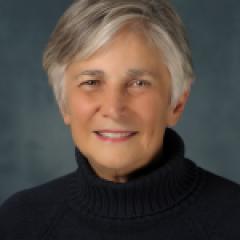Diane Ravitch's Blog: William Mathis: The High School Rankings: Born on Third Base or Hit a Triple?
William Mathis is managing director of the National Education Policy Center and a member of the Vermont Board of Education. He says that you can take the model below and apply it to any state; the result will be the same. The high schools in affluent communities are the “best,” and the high schools enrolling students in low-income communities don’t make the cut. That is about the way both NCLB and Race to the Top determined which schools needed to be closed: the schools attended by poor kids. It was knowing and heartless malpractice.
He writes:
Evaluating High Schools: Born on Third Base or Hit a Triple?
If you were lucky, you missed it. But U.S. News and World Report recently committed their annual statistical malfeasance by offering up a rank order of what it proclaims as the nation’s “best” high schools. They amalgamated state tests, participation in AP/IB classes (Advanced Placement and International Baccalaureate), and graduation rates. For the tests, they weighted scores “on what matters most,” which they defined as reading and math scores. Don’t search for anything about rich, engaging curriculum; committed teachers, community involvement or piano concertos. These don’t count. And don’t search for any recognition of the reality that their “best” schools serve students who have enormous opportunities to learn outside of school while schools you won’t find on the list serve students on the opposite end of our society’s appalling opportunity gaps.
Statisticians have long protested this improper use of ordinal scales because they purport to measure something they don’t – the purpose of high schools. Few parents and fewer students would say the highlight and the most useful part of their high school experience was tests.
But again, the real problem with these – and many other – rankings is that test scores do a good job of measuring kids’ socio-economic status, but they are a pathetic measure of school quality. Yet U. S. News ranks the nation’s schools, making the amusing distinction that the 6701st school is better than the 6702nd.
This year, the magazine went a step further and rated schools within states. To illustrate, here’s Vermont’s top ten, in order, along with information about area wealth:
Vermont’s Best Schools: Community Income and Economic Deprivation
School Town per Percent
Capita Income Economically Challenged
|
Note that the per capita income in the “top ten” is more than $4,000 above the Vermont state average. For a family of four, this means an extra $16,000 per household. That is a sizable piece of change and likely indicates a highly educated community as much or more than it does a successful school. To avoid the senseless public shaming of rank orders, I will not list the bottom ten or the “worst schools.” But their per capita income is $27,245 – a full $10,000 per person per year less.
Looking at the low income side, 41% of the state’s children are living in economic deprivation (defined here as eligible for free and reduced lunch) but our top ten must have been born on third base, as their poverty rate is a staggering one-third lower.
The low population schools of Lakes Region, Proctor and Craftsbury made the cut even with high poverty. Missing from the list is Leland and Gray, which won a national honor for educating all the children regardless of their circumstances. They actually hit the triple. Yet they don’t get the honor.
This is not to deny the fine and diverse work of many of the state’s more affluent schools. But nationally we know that, on the whole, schools serving affluent communities almost always have strong outcomes. When children are given valuable learning resources in their communities and their homes, this shows up in their outcomes just as it does when those learning resources are in the school. Look at the concentration in Chittenden County, for example. When poverty and discrimination deny children those resources, then the load carried by their schools is much heavier. The policy lessons that adults must learn are equally weighty: we must revisit our educational programs as well as our method of evaluating (and ranking!) schools.
At the turn of the century, it became law that the secretary annually determine if all schools provide substantially equal educational opportunities to all students. The language is punitive in that it singly holds the school responsible. But doesn’t the state have an ethical obligation to make sure that all children have the right to be born on third base?
William J. Mathis is Managing Director of the National Education Policy Center and serves on the Vermont State Board of Education. The views expressed are strictly those of the author.
This blog post, which first appeared on the
website, has been shared by permission from the author.
Readers wishing to comment on the content are encouraged to do so via the link to the original post.
Find the original post here:
The views expressed by the blogger are not necessarily those of NEPC.
